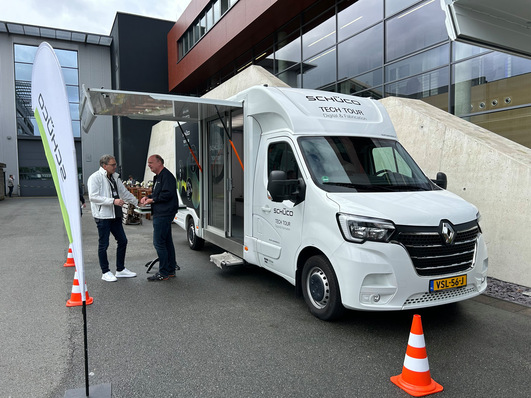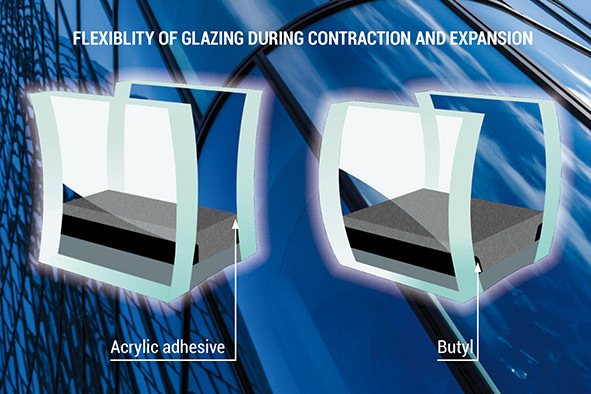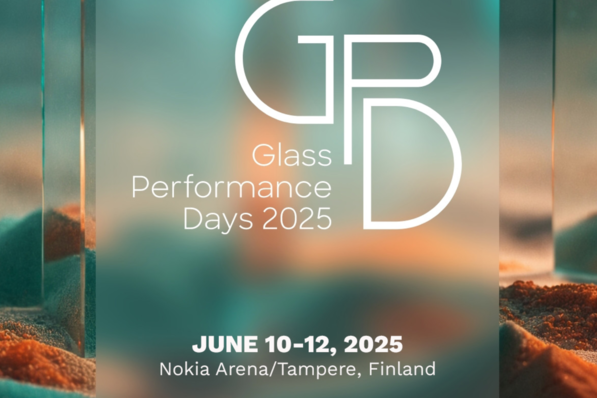A distinctive feature of the design of the “Matchbox” office tower in Eschborn/Germany is the elegantly detailed glass facade, which incorporates a building-integrated photovoltaic system (BIPV) by Schüco. The photovoltaic modules generate approximately 180,000 kWh of electricity annually, making a significant contribution to energy-efficient building operations.
With this project, the facade specialist Schüco demonstrates its commitment to decarbonization across the entire building lifecycle—from design and construction to operation and recycling.
Energy-Efficient Facade Design
Architecturally, the new building is defined by its harmoniously segmented glass facade, which features integrated photovoltaic modules contributing to the building’s optimized sustainability.
The starting point for implementing Schüco’s BIPV system was the client’s requirements: The aim was to create a sustainable, future-oriented building with high energy efficiency that operates entirely without natural gas or other fossil fuels.
Which Schüco system was chosen ?

Stefan Schilling / Schüco
The facade was designed as a custom solution using the highly insulated Schüco AWS 75 BS.HI+ aluminum window system in combination with Schüco’s building-integrated photovoltaic system.
The Cradle-to-Cradle-certified system was deliberately applied to all sides of the building to create a unified appearance and, despite lower efficiency on the less sunlit north side, to maximize overall output.
The integrated PV modules generate around 180,000 kWh/year, covering more than half of the general electricity demand when combined with the rooftop PV system.
Through inverters, the direct current generated by the PV elements is fed directly into the building’s electrical network. Any surplus energy during peak summer periods is fed into the public grid.
Form and Function in Harmony
“Based on our concept, the implemented solution ultimately represents the building’s structural framework in a well-proportioned manner,” explains architect Nicolas Schrabeck. “The BIPV integration reflects the building’s function and structure in line with ‘form follows function.’”
The architects also highlight Schüco’s strong support: “The company not only acted as a system provider but also as a partner for the project-specific implementation of the facade,” says Nicolas Schrabeck.
Customised Color for the BIPV system by Scüco
The option to customise the color of the PV elements was used to design the facade in a monochromatic, nearly black tone. The bronze-colored window frames create a subtle contrast.
The result is a glass envelope, characterized by windows and PV elements, that features a pleasant and high-quality rhythm. There is no disruptive reflection or glare from sunlight. This clearly demonstrates that a design-oriented facade and the use of BIPV are not mutually exclusive.

Stefan Schilling / Schüco
Holistic Recycling
The BIPV modules promise long-term operation and quick payback. Should a PV module ever need to be replaced, it can be done with minimal effort. Sustainable operation was considered during the building’s planning, as was deconstruction and recycling.
The selected Schüco AWS aluminum window systems hold Cradle-to-Cradle certification. Similarly, the integrated BIPV modules can be recycled through glass recycling processes. This ensures complete recycling within the material cycle.
With this project, facade specialist Schüco underscores its commitment to significantly reducing a building’s carbon footprint throughout its lifecycle using its Schüco Carbon Control offering—from design to construction, operation, and recycling.
This concept aligns with the European Green Deal, which aims for climate neutrality in Europe by 2050 and calls for significant measures in building operations.
Schüco project engineer Marco Schech states: “To achieve a substantial reduction in these emissions, we offer Carbon Control, a modular solution that allows for the decarbonization of facades tailored to a building’s specific lifecycle requirements.”
The result is a building envelope designed with a comprehensive approach, reducing CO2 emissions across the entire lifecycle.
About the project: With the “Matchbox” office tower in Eschborn / Germany, the Frankfurt-based project developer Lang & Cie. Real Estate AG has created a high-quality office building. The planning was carried out by the Frankfurt-based architectural firm Dietz Joppien Hammerschmidt GmbH.

Matthias Rehberger / GW














